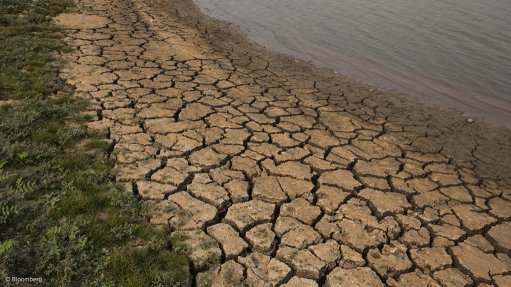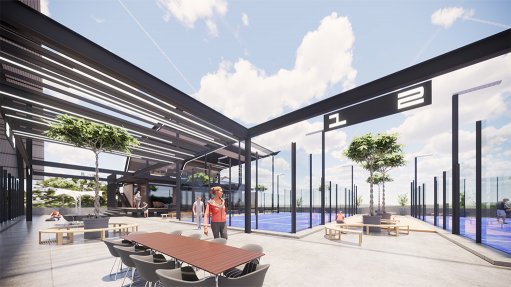Electrical Power Generation 101
A few things we should possibly all know if we wish to talk about energy. The national grid is not a energy storage dam. What goes into the grid comes out of the grid very shortly, almost instantaneously. Thus, the amount of power generated matches the amount of power used, apart from losses due to heating of power lines and so on.
Steam turbine generators at power stations are designed to ramp up and down the power they generate according to the load to be supplied. Hydroelectric turbine generators are similarly designed. Gas turbines are similarly designed. Large steam turbine generators can ramp up from no load to full load in about two hours. Hydroelectric turbines can go from no load to full load in about three minutes. Gas turbines take about 20 seconds.
Now, the load on the South African national power system never falls to zero. While at night people sleep and shops are closed, there are factories and mines and streetlights which still use electricity all night. This load is called the baseload and has to be supplied at all times. The baseload is often split into daily baseload and evening baseload, but let us remember that there is a minimum load that has to be supplied at all times.
Thus, in any power system consisting of steam, hydropower and gas power generation, one aims to have steam generators supplying the baseload, while hydroelectric and gas turbines supply electrical loads which are intermittent. Solar power stations can similarly ramp up and down according to the load supplied but, obviously, not at night time. Generation that is supplied by wind turbines cannot ramp up and down according to the load and the power they supply varies from day to day and hour to hour, month to month. This makes wind an unreliable source of power generation. If, for example, wind power was installed to supply 50% of South Africa’s electrical load, then today, August 7, 2017, no wind turbine would be operating, since, according to the real-time program windy (https://www.windy.com) over almost all of South Africa, the wind speed is not greater than 8 km/h. Thus, we would have to have the whole load supplied by steam, hydro or gas turbine.
To run a power system in this manner is not economically sound. To quote Alan M: “A 100 MW wind farm cannot replace a 100 MW steam turbine already on load-following duty because the 100 MW wind farm is known to be unable to produce full output for more than a few hours. But, to keep electricity supply and demand balanced and stable within legal frequency and voltage tolerances, the grid operator keeps the 100 MW on the grid, for which it is now not earning its keep, while the 100 MW wind farm input varies according to how close the wind speed is to optimum.”
Who wants a generator that works intermittently? Being unreliable and intermittent, why use wind power generation? The answers are generally that it is free and it is green. In point of fact, it is not free; coal is free to dig out of the ground but the process involved is what costs money. Wind is free but the turbine costs money. Wind power is indeed green and pollution free (if one regards a wind turbine as a pleasant sight). However, the wind can drop in 30 minutes, which means that the wind power supply has to be quickly replaced by a gas turbine supply that is not green.
For steam turbines, the presence of the wind power supply implies that the steam turbines are not running at full load, where emissions are the least per unit generated but at a point higher. So what? Well, all this is background to what I plan to write in my next column, which is simply this: I believe the wind turbine supporters are engaged in a form of power system myth generation; that they are deceitful; that German wind energy interests are engaged in a form of government institution and power system capture in the form of pushing wind generation. Watch this space.
Comments
Press Office
Announcements
What's On
Subscribe to improve your user experience...
Option 1 (equivalent of R125 a month):
Receive a weekly copy of Creamer Media's Engineering News & Mining Weekly magazine
(print copy for those in South Africa and e-magazine for those outside of South Africa)
Receive daily email newsletters
Access to full search results
Access archive of magazine back copies
Access to Projects in Progress
Access to ONE Research Report of your choice in PDF format
Option 2 (equivalent of R375 a month):
All benefits from Option 1
PLUS
Access to Creamer Media's Research Channel Africa for ALL Research Reports, in PDF format, on various industrial and mining sectors
including Electricity; Water; Energy Transition; Hydrogen; Roads, Rail and Ports; Coal; Gold; Platinum; Battery Metals; etc.
Already a subscriber?
Forgotten your password?
Receive weekly copy of Creamer Media's Engineering News & Mining Weekly magazine (print copy for those in South Africa and e-magazine for those outside of South Africa)
➕
Recieve daily email newsletters
➕
Access to full search results
➕
Access archive of magazine back copies
➕
Access to Projects in Progress
➕
Access to ONE Research Report of your choice in PDF format
RESEARCH CHANNEL AFRICA
R4500 (equivalent of R375 a month)
SUBSCRIBEAll benefits from Option 1
➕
Access to Creamer Media's Research Channel Africa for ALL Research Reports on various industrial and mining sectors, in PDF format, including on:
Electricity
➕
Water
➕
Energy Transition
➕
Hydrogen
➕
Roads, Rail and Ports
➕
Coal
➕
Gold
➕
Platinum
➕
Battery Metals
➕
etc.
Receive all benefits from Option 1 or Option 2 delivered to numerous people at your company
➕
Multiple User names and Passwords for simultaneous log-ins
➕
Intranet integration access to all in your organisation


















